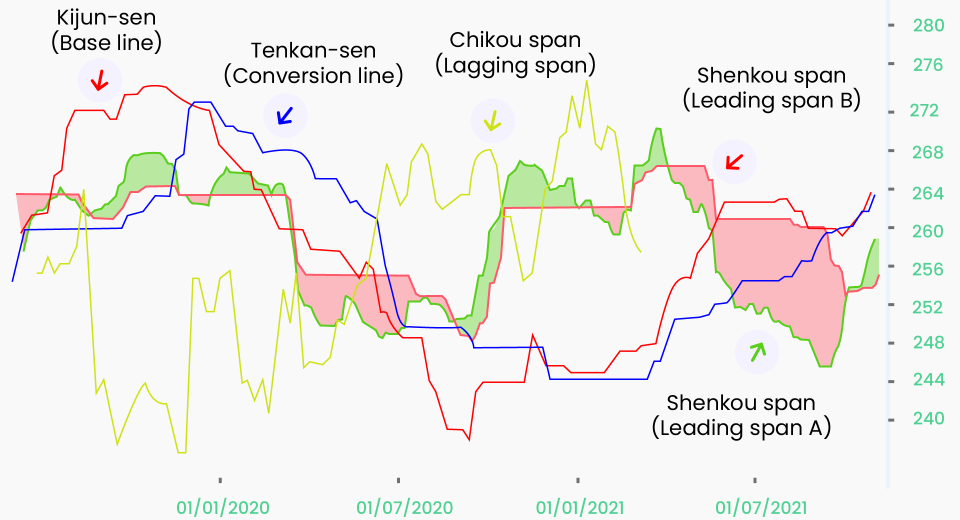A trading strategy is incomplete without risk management measures. There’s no doubt that markets are volatile, but isn’t this what makes them exciting? Risk management ensures the excitement isn’t marred by emotion-based decisions that could lead to losses. Protecting your trading capital is the first step to ensuring satisfying trading experiences. A well-developed risk management plan empowers traders to protect gains while mitigating or limiting losses.
Read on to learn how to apply stop loss, trailing stops and take profit, the 3 most popular risk management strategies in the financial markets.
Why Place Limits?
Implementing risk management measures while taking a position has many benefits:
- It prevents impulsive and emotional decision-making after entering a trading position. The limits are calculated based on your risk tolerance, acceptable losses and the trade’s risk-to-reward ratio. This means the exit can be automated based on a rationale that is backed by metrics.
- Automating exit points allows traders to avoid the market when times get rough. They don’t have to continuously monitor their position since the exit points are predetermined according to the trading strategy.
- Most importantly, risk limits are completely free to use. There’s no additional cost associated with setting these limits, which makes them the most favoured risk management measures among traders.
Stop Loss
As the name suggests, stop loss is a technique to limit losses if the market moves against your prediction. It forcibly closes the position, making you exit the market before the losses pile up. Although it is natural to hope that the market will reverse, prices often do not rebound substantially enough to offset the losses of staying with the trade.
Traders place a stop loss below the entry level when opening a long position and above it when opening a short position.
The downside of a stop loss is that it does not capture any profits even if the market moves in your favour for a while before reversing. Consider a position opened at a price point of $100 with a stop loss of $95. If the price rises to $130 and then declines to $90, the position will be closed at $95. So, you don’t gain anything from the upward price move.
Take Profit
Take profit or limit orders allow you to book profits once a specific price level is reached. This technique is especially useful in trending markets. It helps traders limit exposure to reversal risk by exiting when the market sees favourable movement. This way, traders’ profits are locked even if the trend reverses. Popularly, traders partially close their positions when there is a likelihood that the trend could continue. Traders use volume and momentum indicators to assess the strength of a trend to gauge what fraction (or whole) of the position they want to close.
Traders place a target profit level above the entry point when opening a long position, at a level they expect the price to reach before reversing. The take-profit level is set below the entry point for a short position.
Trailing Stop Loss
A trailing stop-loss is an enhancement over the fixed stop-loss discussed earlier. There is no single price at which the trade will be closed. The stop loss level is set as a percentage or dollar amount moved from the current price. The trailing stop moves along with the price while the price continues in the existing direction. If it reverses, the trailing stop stays as is. Traders use it to ensure that profits are captured if the market reverses after moving in the speculated direction for a while but before reaching the target price level.
Consider the previous example of stop loss. If instead of a stop loss at $95, there was a trailing stop at -$5 from the current price. If the price moves to $130, the trailing stop will also be $125. So, now the position will be closed as soon as the price reverses, so you don’t incur losses.
A downside of using trailing stop loss is when there are price gaps before a dramatic move. The trailing stop level does not get triggered, defying its purpose. For instance, if you open a long position and place a trailing stop at 5% below the current price. If the price gap drops by 15%, the trailing stop will not be triggered.
One way to manage the risks of such high volatility is to combine stop loss with trailing stops. The two form a powerful combination to limit losses and facilitate capturing some profits.
How to Identify Stop Loss, Trailing Stop Loss and Take Profit Levels
Traders use different indicators in diverse market conditions to determine the most suitable limits for their trading positions.
Sideways Market
When trading a ranging market, traders identify key support and resistance levels. A stop loss is placed a little below the support (for a short position) or a little above the resistance (for a long position). Technical indicators, such as Bollinger Bands, Fibonacci Levels and Donchian Channels, help traders identify key levels to place stop loss in such markets.
Trending Markets
Technical indicators such as ATR, Parabolic SAR and SuperTrend indicators are used to place stop loss or take profit levels in trending markets.
High Volatility Markets
Highly volatile markets require dynamic adjustment of exit limits to improve the profitability of positions according to market fluctuations. Popular indicators used in volatile markets are Chandelier Exit, Chande Kroll Stop and the Volatility Stop Indicator.
To Sum Up
- Risk management is critical to ensuring capital protection while trading.
- Stop loss is a way to automatically exit positions if the asset price moves in an unfavourable direction.
- Taking profit or limit orders allow traders to exit the trade when their target price is reached and before the trend reverses.
- Trailing stop loss allows traders to capture profits in a volatile market while mitigating losses.
- Combining stop loss and trailing stop loss is a great way to manage the risk of price gapping market.
Traders use technical indicators to determine exit levels depending on the market conditions.
Disclaimer:
All data, information and materials are published and provided “as is” solely for informational purposes only, and is not intended nor should be considered, in any way, as investment advice, recommendations, and/or suggestions for performing any actions with financial instruments. The information and opinions presented do not take into account any particular individual’s investment objectives, financial situation or needs, and hence does not constitute as an advice or a recommendation with respect to any investment product. All investors should seek advice from certified financial advisors based on their unique situation before making any investment decisions in accordance to their personal risk appetite. Blackwell Global endeavours to ensure that the information provided is complete and correct, but make no representation as to the actuality, accuracy or completeness of the information. Information, data and opinions may change without notice and Blackwell Global is not obliged to update on the changes. The opinions and views expressed are solely those of the authors and analysts and do not necessarily represent that of Blackwell Global or its management, shareholders, and affiliates. Any projections or views of the market provided may not prove to be accurate. Past performance is not necessarily an indicative of future performance. Blackwell Global assumes no liability for any loss arising directly or indirectly from use of or reliance on such information herein contained. Reproduction of this information, in whole or in part, is not permitted.





